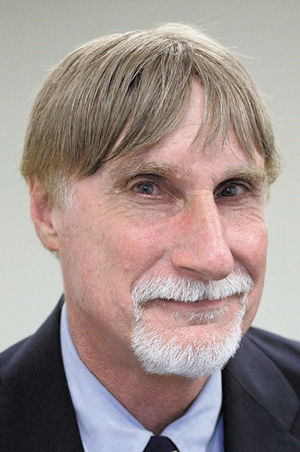Crown Heights visit rich in family, tradition
Published August 24, 2016
Every summer, my wife, Ruth, and I visit our son Shaya in Crown Heights, Brooklyn, where he lives with his wife and six children.
For a Lubavitch Jew, which Shaya has been since college, Crown Heights is the center of the universe. It is the headquarters of the Chabad movement, whose rabbis are found in more than 3,000 locations from Boston to Bangkok spreading the message of the late Menachem Mendel Schneerson (known as the Rebbe): to heal the world one soul at a time.
We have been making the pilgrimage to Crown Heights for more than a decade. One would have thought the novelty of experiencing such an unusual place would have worn off by now.
By unusual, I mean where else can you see a virtual 19th century European-style community whose traditional ways include men and women wearing multiple layers of body-length clothing in 100-degree weather so as to model modesty?
However, even though we have been there, done that, there is always a sense of adventure when we arrive.
This visit in July was no different, as we disembarked at LaGuardia Airport for a 10-day stay. Our airport taxi eventually made its way toward 770 Eastern Parkway (the hallowed Lubavitch shul) and past the intersection of Bedford and Montgomery avenues (the former site of another shrine, Ebbets Field), dropping us on Crown Street.
As we entered our son’s house, we were greeted by a large portrait of the Rebbe, whose visage can be found in almost every household and commercial establishment in the neighborhood. For someone who has been dead since 1994, the Rebbe retains a remarkable hold over the community.
Our first night there, in commemoration of the Rebbe’s yahrzeit, we trekked to Queens to the Ohel, his gravesite, where annually caravans of the faithful line up to pay their respects and ask for their prayers to be fulfilled. The custom is to scribble one’s request on a piece of paper, tear it up and toss it into the crypt.
Because it seemed to work for the Triple Crown winner American Pharoah a couple years ago — the horse’s owner had his jockey visit the Ohel the night before winning the Belmont Stakes — I thought it wouldn’t hurt for me to pray for good health for my family. I was tempted to also ask for a winning lottery ticket, but I did not want to appear greedy.
Of course, Shabbat is the main event in Crown Heights. Pokémon and most everything else come to a stop.
On Friday afternoon, I procured foodstuffs for the weekend at an amazing catering kitchen called Dovid Malka. It offers everything from the best potato kugel I have tasted to the best kosher versions of pigs-in-a-blanket, along with fried gefilte fish balls and other Jewish delicacies.
The owner, spotting an out-of-towner and non-Orthodox Jew, tried hard to get me to lay tefillin — to put on the leather straps and boxes worn on the arm and head by observant Jews during prayer — and backed off only when I promised I would do it with my son, which I later did. It was a small price to pay for sampling the best kosher food in the Western Hemisphere.
On Friday night, after a loud siren announced sundown, we put money in a tzedakah box, lit Shabbat candles, recited kiddush over the wine, washed hands and blessed the challah before chowing down dinner. Elie, the 2-year old, knew the drill even if I did not always remember.
On Saturday after synagogue services and a mammoth lunch, I attended a farbrengen. Think of a coffee klatch, except this was a men-only gathering, where dozens of black hats convened to hear a learned Hasid offer Torah interpretations (parshas), with overflowing deli platters and bottles of vodka substituting for cookies and coffee. The parshas were punctuated by lots of l’chaims.
The Sabbath ended with the traditional Havdalah ceremony as the candles were extinguished. The same set of rituals was repeated the following Shabbos. Between the two Shabbat weekends, there were many interesting happenings, too numerous to describe in any detail. To note just a few:
• On Sunday, we all went out to Long Island to visit my daughter-in-law’s father who lives in a rented cottage on a huge estate. We were allowed to swim in a beautiful pool next to a vacant mansion and its manicured grounds. With the Manhattan skyline visible in the distance and overlooking the sailboats on Long Island Sound, the scene was right out of the “The Great Gatsby,” except here we were wearing head-to-toe swimsuits per Lubavitch and not WASP norms.
• Each morning, I ate at my favorite bagel shop. No, not Einstein’s, but the real deal. The Rebbe always used to say it is a small world, and sure enough one morning I bumped into Rabbi Yosef Landa, director of Chabad of Greater St. Louis.
• I also managed to get to the Carnegie Deli on Seventh Avenue for my favorite hot pastrami sandwich and the stuffed derma you cannot find outside New York. I stuffed myself further with a slice of strawberry cheesecake that only comes in one size: enough to feed 10.
• I spent hours traversing Kingston, the main drag in Crown Heights, trying to buy a can of shaving cream and a New York Times. I had as much luck finding these items there as I might have in ISIS-held territory.
• The happiest hours were spent with the grandkids. Lubavitch grandkids are like any other — the cutest you can imagine — except there tend to be more of them. They are always the highlight of the trip.
A weather delay at the airport on our way home gave me lots of time to reflect on our visit. I kept thinking about the Rebbe. My son believes deeply in the religious-moral code he espoused, one that has many admirable tenets, notwithstanding the ridicule they often elicit from outsiders.
Admittedly, it is easy to make fun of the “Mitzvah tanks” — large RV-looking vans that dot the Crown Heights area that are equipped with loudspeakers for proselytizing — or the “Mashiach now” signs, ubiquitously found in windows advertising the hoped-for return of the Rebbe as the Messiah.
But, aside from disrespecting cultural diversity, such derision overlooks valuable life lessons Chabad has to teach regarding, for example, the sanctity of the family and the importance of taking tikkun olam to a new level.
I relearn these lessons every summer.















